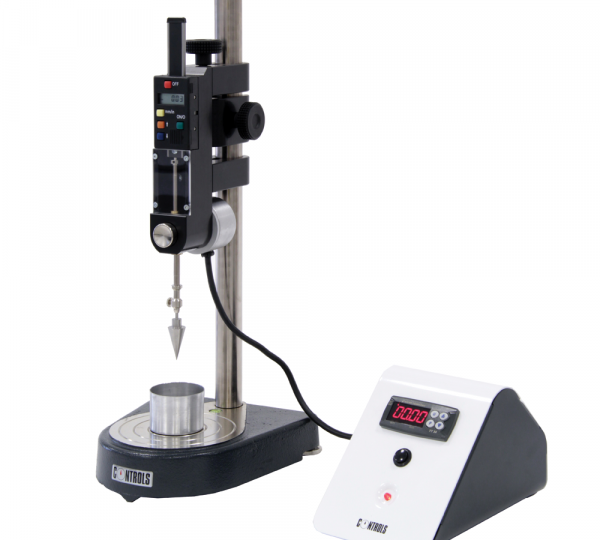The cone penetrometer test (CPT) for liquid limit is a widely used method for measuring the strength and stiffness of soils. It is particularly useful in geotechnical engineering, where it is used to determine the liquid limit of soils. The liquid limit is a measure of the moisture content at which a soil transitions from a plastic state to a liquid state. It is an important parameter for foundation design, slope stability analysis, and other geotechnical applications. While the basic procedure for CPT is relatively simple, there are advanced techniques that can be used to improve its accuracy and efficiency.
Basic Cone Penetrometer Testing for Liquid Limit Analysis
The basic procedure for CPT involves inserting a cone-shaped probe into the soil and measuring the resistance to penetration. The resistance is measured in terms of cone penetration depth (CPD), which is the distance the cone penetrates into the soil. The test is repeated at different moisture contents until the soil reaches its liquid limit, which is defined as the moisture content at which the CPD reaches a certain value.
While the basic CPT procedure is straightforward, it has some limitations. One of the main limitations is that it is a time-consuming process that requires a lot of manual labor. Additionally, it can be difficult to achieve consistent results due to variations in soil properties and testing conditions.
Advanced Techniques for Cone Penetrometer Testing in Liquid Limit Analysis
To address these limitations, there are several advanced techniques that can be used to improve the accuracy and efficiency of CPT. Two of the most commonly used techniques are automated cone penetration testing (ACPT) and dynamic cone penetrometer (DCP) testing.
Automated Cone Penetration Testing (ACPT)
ACPT is a technique that uses an automated device to perform the CPT. The device consists of a motorized cone penetrometer that is driven into the soil at a controlled rate. The device is equipped with sensors that measure the penetration force and CPD in real-time. The data is transmitted wirelessly to a computer, where it can be analyzed and stored.
ACPT has several advantages over the basic CPT procedure. First, it is faster and more efficient since it does not require manual labor. Second, it provides more accurate and consistent results since it eliminates human error. Third, it can be used to test soils that are difficult to test using the basic CPT procedure, such as hard soils and soils with high moisture content.
Dynamic Cone Penetrometer (DCP) Testing
DCP testing is another advanced technique that can be used to determine the liquid limit of soils. DCP testing uses a different type of penetrometer than the CPT. Instead of a cone-shaped probe, it uses a cylindrical probe that is driven into the soil using a hammer. The force required to drive the probe into the soil is measured, and the CPD is calculated based on the length of the probe.
DCP testing has several advantages over the basic CPT procedure. First, it is faster and more efficient since it does not require as much equipment as the CPT. Second, it can be used to test soils that are difficult to test using the CPT, such as hard soils and soils with high moisture content. Third, it can be used to test soils at greater depths than the CPT.
Interpretation and Analysis of CPT Data
Once the CPT data has been collected, it needs to be interpreted and analyzed to determine the liquid limit of the soil. The data can be analyzed using various methods, such as graphical analysis, mathematical modeling, and statistical analysis. The results of the analysis can then be used to make decisions about foundation design, slope stability analysis, and other geotechnical applications.
Quality control and validation are also important considerations when interpreting and analyzing CPT data. It is important to ensure that the testing equipment is properly calibrated and that the testing conditions are consistent. In addition, it is important to validate the results of the CPT by comparing them to other methods, such as laboratory testing.
Examples of Practical Applications
CPT data has been used in a wide range of practical applications in geotechnical engineering. For example, it has been used to determine the load-bearing capacity of foundations, to assess the stability of slopes, and to evaluate the liquefaction potential of soils during earthquakes. The advanced techniques discussed in this article, such as ACPT and DCP testing, have been particularly useful in these applications.
Best Practices for Cone Penetrometer Testing in Liquid Limit Analysis
In addition to using advanced techniques for CPT, there are several best practices that should be followed to ensure accurate and consistent results. These include:
- Proper site preparation: The site where the CPT will be performed should be properly prepared to ensure that the soil is representative of the conditions that will be encountered in the field. This includes removing any surface vegetation, debris, or other obstructions that could interfere with the test.
- Consistent testing conditions: The testing conditions, such as the rate of penetration, should be consistent across all tests to ensure that the results are comparable. Any variations in testing conditions can result in variations in the CPD values and could affect the determination of the liquid limit.
- Calibrated equipment: The equipment used for CPT should be properly calibrated to ensure accurate and consistent results. This includes ensuring that the penetrometer is properly calibrated, that the sensors are functioning correctly, and that the data acquisition system is properly calibrated.
Conclusion
Cone penetrometer testing is an important tool for geotechnical engineers and soil scientists. While the basic CPT procedure is relatively simple, there are advanced techniques that can be used to improve its accuracy and efficiency. ACPT and DCP testing are two such techniques that have been widely adopted in the industry.
These techniques provide more accurate and consistent results and can be used to test soils that are difficult to test using the basic CPT procedure. As the field of geotechnical engineering continues to evolve, it is important for engineers and soil scientists to stay up-to-date with the latest advancements in CPT technology.








